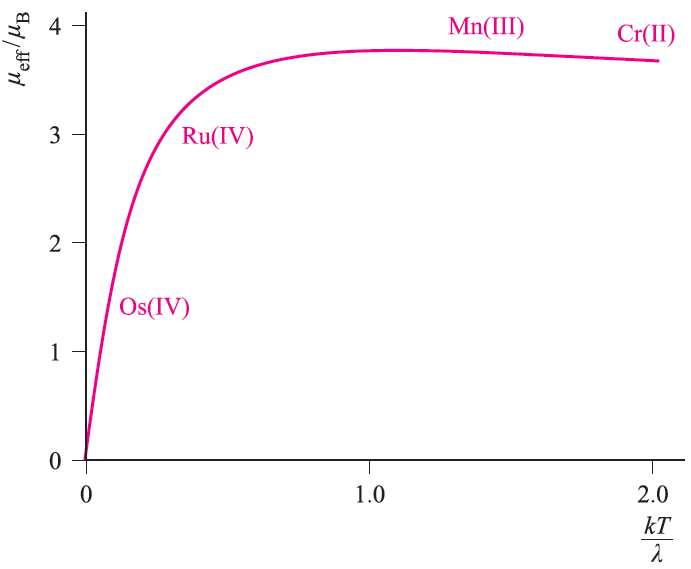


 علم الكيمياء
علم الكيمياء 
 الكيمياء التحليلية
الكيمياء التحليلية 
 الكيمياء الحياتية
الكيمياء الحياتية 
 الكيمياء العضوية
الكيمياء العضوية 
 الكيمياء الفيزيائية
الكيمياء الفيزيائية
 الكيمياء اللاعضوية
الكيمياء اللاعضوية 
 مواضيع اخرى في الكيمياء
مواضيع اخرى في الكيمياء
 الكيمياء الصناعية
الكيمياء الصناعية |
Read More
Date: 23-2-2017
Date: 14-9-2016
Date: 28-11-2016
|
The effects of temperature on μeff
So far, we have ignored the effects of temperature on μeff. If a complex obeys the Curie Law (equation 1.2), then μeff is independent of temperature; this follows from a combination of equations 1.1 and 1.2.
 (1.1)
(1.1)
 (1.2)
(1.2)
where C = Curie constant; T = temperature in K. However, the Curie Law is rarely obeyed and so it is essential to state the temperature at which a value of μeff has been measured. For second and third row d-block metal ions in particular, quoting only a room temperature value of μeff is usually meaningless; when spin–orbit coupling is large, μeffis highly dependent on T.

Fig. 1.1 Kotani plot for a t2g4 configuration; λ is the spin– orbit coupling constant. Typical values of μeff(298 K) for Cr(II), Mn(III), Ru(IV) and Os(IV) are indicated on the curve.
For a given electronic configuration, the influence of temperature on μeffcan be seen from a Kotani plot of μeff against kT/λ where k is the Boltzmann constant, T is the temperature in K, and λ is the spin–orbit coupling constant. Remember that λ is small for first row metal ions, is large for a second row metal ion, and is even larger for a third row ion. Figure 1.1 shows a Kotani plot for a t2g4 configuration; four points are indicated on the curve and correspond to typical values of μeff(298 K) for complexes of Cr(II) and Mn(III) from the first row, and Ru(IV) and Os(IV) from the second and third rows respectively. Points to note from these data are:



|
|
|
|
لصحة القلب والأمعاء.. 8 أطعمة لا غنى عنها
|
|
|
|
|
|
|
حل سحري لخلايا البيروفسكايت الشمسية.. يرفع كفاءتها إلى 26%
|
|
|
|
|
|
|
جامعة الكفيل تحتفي بذكرى ولادة الإمام محمد الجواد (عليه السلام)
|
|
|